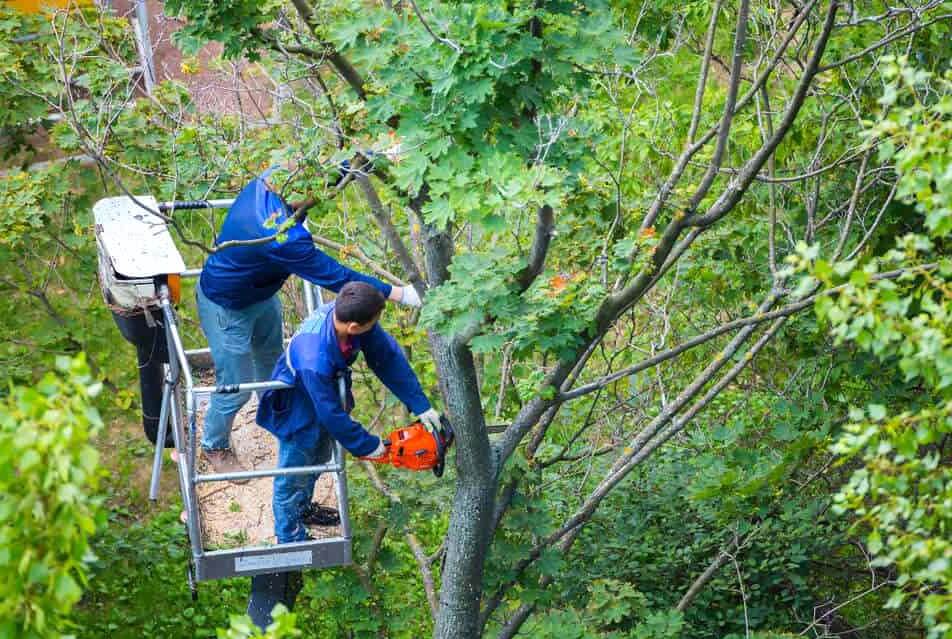Delaware Tree Removal Laws: A Comprehensive Guide (2024 Update)
Trees are an essential part of Delaware’s landscape, providing environmental benefits such as reducing carbon dioxide, improving air quality, providing shade, and enhancing property values. However, there are times when trees must be removed, whether for safety concerns, development, or disease. Delaware, like many states, has both state and local regulations that govern tree removal. These laws aim to balance the protection of the state’s urban canopy with the rights of property owners to manage their land responsibly.
Useful Contact Information for Tree Removal in Delaware
| Department/Service | Phone Number | Website |
|---|---|---|
| Delaware Department of Natural Resources (DNREC) | (302) 739-9000 | DNREC Website |
| Delaware Forest Service | (302) 698-4500 | Delaware Forest Service |
| City of Wilmington Urban Forestry | (302) 576-2620 | Wilmington Urban Forestry |
| City of Newark Tree Management | (302) 366-7000 | Newark Tree Management |
| Lewes City Arborist | (302) 645-7777 | Lewes Government |
Overview of Delaware’s Tree Removal Laws
Delaware’s tree removal regulations are primarily enforced at the local level, with each city or county having its own set of rules regarding the removal of trees. State laws do apply in certain situations, particularly for the protection of natural resources and preservation of specific tree species.
At the state level, tree removal is largely influenced by environmental protection laws, especially when it involves sensitive areas such as wetlands, coastal zones, or protected forests. Delaware also has guidelines under the Delaware Forest Service, which encourage responsible forestry practices and protect certain trees. For more detailed information, property owners can refer to the Delaware Department of Agriculture’s Forest Service page: Delaware Forest Service.
Statewide Tree Removal Regulations
In Delaware, there are a few statewide laws and regulations related to tree removal. These laws generally apply to tree removal in sensitive environmental areas, forest management, and certain types of developments.
- Delaware’s Critical Area Protection: Trees located in critical areas like wetlands, coastal zones, and floodplains are subject to stricter removal regulations. Before removing trees in these areas, property owners must obtain permits from the state’s Department of Natural Resources and Environmental Control (DNREC). These laws are designed to protect Delaware’s natural habitats and prevent erosion, flooding, and damage to wildlife ecosystems. Learn more about critical area regulations on the DNREC’s Coastal and Wetland Resources page: DNREC Coastal Resources.
- Delaware Forest Service Regulations: For forested properties or those larger than five acres, the Delaware Forest Service oversees tree removal under the Delaware State Forest Service Regulations. These regulations focus on sustainable forest management, ensuring that logging or tree removal practices do not harm the long-term health of Delaware’s forests. Visit the Delaware State Forest Regulations page for more information: Delaware Forest Regulations.
Local Ordinances: City-Specific Tree Removal Laws in Delaware
In Delaware, most tree removal laws are governed by local municipalities, with ordinances varying significantly depending on the city or county. Local governments often regulate tree removal through their own planning, zoning, and environmental protection departments. These local laws dictate when permits are required, which tree species are protected, and how tree removal must be handled.
City-by-City Breakdown of Tree Removal Laws
| City/County | Residential Permit Rules | Commercial Permit Rules | Protected Species/Heritage Trees |
|---|---|---|---|
| Wilmington | Permit required for trees over 6” in diameter | Permits required for commercial property removals | Heritage and specimen trees require additional permits |
| Dover | No permit required for trees on private property | Permit required for trees over 8” in diameter | Native and mature trees are protected in certain zones |
| Newark | Permit required for removal in historic districts | Permit needed for all commercial properties | Historic and large native species are protected |
| Lewes | Permit required for trees over 12” in diameter | Stringent regulations for waterfront and urban areas | Special care for coastal trees and protected species |
For more information on city-specific tree removal regulations, property owners can visit their local government’s website:
- City of Wilmington: Wilmington Urban Forestry
- City of Newark: Newark Tree Management
Tree Removal Laws for Residential vs. Commercial Properties
Residential Property Tree Removal Regulations
Tree removal on residential properties in Delaware is often less regulated compared to commercial properties, but homeowners still need to be aware of local ordinances. Many cities, such as Wilmington, require permits for removing trees over a certain size or if the tree is located in a protected area like a historic district.
- Protected Trees: Many municipalities designate certain tree species as “heritage,” “specimen,” or “protected” due to their size, age, or ecological value. Removing these trees typically requires a permit, even if the tree is located on private property. In Newark, for example, any tree deemed a “historic” tree requires special permission for removal.
- Homeowner Association Rules (HOAs): If a property is governed by an HOA, additional tree removal regulations may apply. HOAs often have rules to preserve the aesthetic and environmental value of the neighborhood’s tree canopy.
Commercial Property Tree Removal Regulations
Commercial properties are subject to stricter tree removal regulations than residential properties in Delaware. Municipalities often require permits for all tree removal activities on commercial land, with additional requirements for replacement or mitigation.
- Tree Surveys: In many cities, commercial property owners are required to conduct a tree survey before removing trees. This survey details the location, species, and condition of the trees on the property. For example, Lewes requires a comprehensive tree management plan for all developments in its coastal areas.
- Replacement and Mitigation: Cities like Dover require that trees removed from commercial properties be replaced with new trees or that the property owner pays a mitigation fee to contribute to urban reforestation efforts.
Protected Trees and Special Ordinances in Delaware
Delaware has several tree species that are protected under local and state regulations due to their historical, cultural, or ecological significance. These protected trees are often referred to as “heritage” or “specimen” trees and may require special permits for removal, even if they are located on private property.
List of Common Protected Trees in Delaware
| Tree Species | Ordinance Requirements |
|---|---|
| American Holly (Ilex opaca) | Protected in many coastal areas due to its native status |
| White Oak (Quercus alba) | Protected in certain counties, especially in historic districts |
| Eastern Red Cedar (Juniperus virginiana) | Requires permit in critical areas and forested zones |
| Bald Cypress (Taxodium distichum) | Protected in wetland areas and requires permit for removal |
For more information on protected trees, check with local city or county ordinances or visit the Delaware Native Plant Society for guidelines on native and protected species: Delaware Native Plant Society.
Application Process for Tree Removal Permits
The tree removal permit application process in Delaware varies across municipalities, but it typically follows a similar framework. Here’s a step-by-step guide for applying for a tree removal permit in most Delaware cities and counties:
- Check Local Ordinances: Start by reviewing the specific tree removal laws and regulations for your municipality. Many cities, such as Wilmington and Newark, have their ordinances available online, while others may require visiting a city or county office.
- Obtain an Arborist Report: For trees that are protected or of significant size, a report from a certified arborist may be required. This report should outline the condition of the tree and the reasons for its removal, such as disease, risk to property, or interference with development plans.
- Submit a Permit Application: Most cities provide application forms on their websites or at local planning and zoning offices. These forms will require information about the tree’s size, species, location, and condition, as well as the reason for removal. For example, Wilmington requires detailed documentation of tree size (DBH—diameter at breast height), health, and location.
- Pay the Application Fee: Delaware municipalities typically charge a fee for processing tree removal permits. Fees vary depending on the size of the tree, the extent of the removal, and the city’s regulations.
- Replacement or Mitigation Plan: Many cities require property owners to submit a tree replacement or mitigation plan along with the permit application. This plan may involve planting new trees in place of those removed or paying a mitigation fee that supports the city’s urban reforestation efforts. For example, Lewes mandates the replacement of trees removed from coastal zones with native species.
- Review and Approval: Once the application is submitted, the local planning or environmental department will review the request. Approval can take anywhere from a few days to several weeks, depending on the complexity of the request and local ordinance requirements.
For specific guidelines, it’s advisable to check the official websites of Delaware municipalities:
- City of Newark: Newark Tree Management Plan
- City of Wilmington: Wilmington Urban Forestry
Tree Removal Laws for Commercial Properties
Commercial tree removal regulations in Delaware are typically more stringent than those for residential properties. Municipalities may require commercial property owners to undergo additional steps to ensure that tree removal aligns with urban planning and environmental conservation goals.
- Comprehensive Tree Surveys: Commercial properties are often required to conduct tree surveys as part of their permit applications. A tree survey includes detailed information about each tree on the property, such as species, size, health, and location. This ensures that valuable trees are not removed without due consideration.
- Site Plans: Along with a tree survey, many cities require commercial property owners to submit site plans showing the proposed development and how it will impact the existing trees. For example, in Lewes, developers must submit site plans that include measures to protect existing trees during construction.
- Mitigation and Replacement Requirements: Delaware cities often require commercial property owners to either replace removed trees or contribute to a tree fund to compensate for the loss of canopy cover. In Wilmington, commercial properties that remove trees must plant new trees at a ratio determined by the size of the removed tree.
- Special Conditions for Historic Areas: Commercial properties located in historic districts or coastal zones may face additional restrictions. For instance, in the City of Lewes, trees in the coastal zone are considered part of the community’s environmental heritage and are subject to stringent removal and replacement policies.
Protected Trees and Special Ordinances in Delaware
Delaware protects certain tree species and mature trees that are considered ecologically or historically valuable. These trees are often designated as “heritage,” “specimen,” or “landmark” trees, depending on their size, age, and location. Removing these trees typically requires a permit, and the property owner may be required to plant replacement trees or pay a fee.
Examples of Protected Tree Species in Delaware:
| Tree Species | Protection Status |
|---|---|
| American Holly (Ilex opaca) | Protected in coastal zones and historic districts |
| Eastern Red Cedar (Juniperus virginiana) | Permits required for removal in certain environmental zones |
| White Oak (Quercus alba) | Protected in historic districts and urban areas |
| Bald Cypress (Taxodium distichum) | Requires special permission for removal in wetlands |
| Southern Magnolia (Magnolia grandiflora) | Protected in Wilmington for trees over 12 inches DBH |
These species, especially in urban and coastal areas, play a critical role in Delaware’s ecosystem, providing habitats for wildlife and helping prevent soil erosion. For more information on protected tree species in Delaware, visit the Delaware Native Plant Society website: Delaware Native Plant Society.
Penalties for Illegal Tree Removal in Delaware
Illegally removing trees in Delaware can lead to severe penalties, particularly for protected species or trees located in sensitive environmental areas. Penalties for unlawful tree removal vary by city but may include:
- Fines: Fines for illegally removing a tree can range from $500 to $10,000, depending on the size of the tree, its protected status, and the severity of the violation. In Wilmington, for instance, removing a “specimen” or “heritage” tree without a permit can result in significant financial penalties.
- Replanting Requirements: Property owners who illegally remove trees may be required to plant multiple new trees to compensate for the loss. The replacement ratio is often based on the size of the tree removed. In Lewes, for example, the removal of a large coastal tree could require the planting of several native trees.
- Mitigation Fees: In cases where replanting is not feasible, property owners may be required to pay mitigation fees to fund the city’s reforestation efforts. These fees are used to plant trees in public spaces to maintain the urban canopy.
- Criminal Charges: In extreme cases, such as the illegal removal of trees in protected wetlands or coastal areas, property owners may face criminal charges, including potential jail time. This is especially true if the illegal removal causes environmental damage or impacts public lands.
Resources for Property Owners and Developers in Delaware
To ensure compliance with Delaware’s tree removal laws, property owners and developers should consult with local arborists and check the appropriate governmental resources:
- Delaware Department of Natural Resources (DNREC): DNREC Website
- Delaware Forest Service: Delaware Forest Service
- Delaware Native Plant Society: Delaware Native Plant Society
Additionally, many cities have urban forestry or environmental divisions that provide guidance on tree protection and removal regulations.
Always consult with local government websites or the Delaware Department of Agriculture’s Forest Service for the latest regulations and requirements when planning to remove trees from your property.



